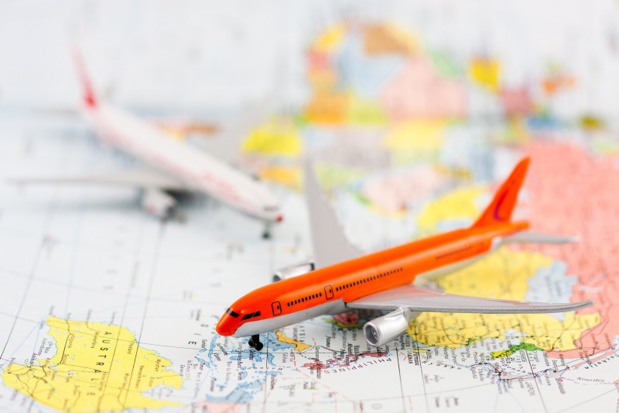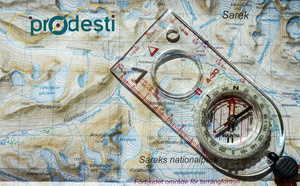
© Unclesam - Fotolia.com
Sure, not all low-cost companies make profit.
Some even lose a significant amount of money. Norwegian is not in very good shape with a loss of 165 million dollars, not much more than Air Asia X, the only true long haul “low cost” that is ending in the red by up to 158 million dollars.
The group Air Asia should actually be worried because the mother company Air Asia only has 25 million dollars of profit compared to 114 million the previous year and the branch Thai Air Asia is just reaching balance with 10 million dollars of benefit whereas Indonesia Air Asia is losing 72 million dollars.
On the South American continent, the situation is not particularly bright either: the main company GOL shows a negative result of 473 million dollars which constitutes by far the largest lost of the year out of all low cost companies.
Some even lose a significant amount of money. Norwegian is not in very good shape with a loss of 165 million dollars, not much more than Air Asia X, the only true long haul “low cost” that is ending in the red by up to 158 million dollars.
The group Air Asia should actually be worried because the mother company Air Asia only has 25 million dollars of profit compared to 114 million the previous year and the branch Thai Air Asia is just reaching balance with 10 million dollars of benefit whereas Indonesia Air Asia is losing 72 million dollars.
On the South American continent, the situation is not particularly bright either: the main company GOL shows a negative result of 473 million dollars which constitutes by far the largest lost of the year out of all low cost companies.
Low-cost companies developed most rapidly in Europe
Autres articles
-
 Vueling, première low cost au monde à proposer le Travel Pass IATA
Vueling, première low cost au monde à proposer le Travel Pass IATA
-
 Thomas Juin (UAF) : "L’avion reste et restera un mode de transport pertinent..."
Thomas Juin (UAF) : "L’avion reste et restera un mode de transport pertinent..."
-
 Rétrospective 2018 : l’hécatombe des compagnies low-cost
Rétrospective 2018 : l’hécatombe des compagnies low-cost
-
 Aeroport de Bordeaux-Mérignac: le terminal low-cost fermé
Aeroport de Bordeaux-Mérignac: le terminal low-cost fermé
-
 transavia : ouverture d'une nouvelle ligne Orly - Olbia (sardaigne)
transavia : ouverture d'une nouvelle ligne Orly - Olbia (sardaigne)
In fact, the Americans and Europeans are the ones raising the numbers.
Leading is the inevitable Southwest with a profit of 1,136 million dollars that is followed closely by Ryanair with a benefit of 1,050 million dollars. Easyjet is not far behind with 747 million dollars.
Remember the time when, from the height of their success, historical European transporters explained to whoever wanted to hear it that the “low-cost” phenomenon had no chance of developing in Europe, even though it had already made a very significant breakthrough in the United States?
In 2014, this mode of transportation accounted for 37.7% of the total European traffic, even more than in the United States where it caps at 23.6%.
Finally, it is in Europe that the low-cost model developed most rapidly. There was an ideal breeding ground.
Traditional companies used to imposed an obsolete pricing system where it was mandatory to get a roundtrip flight in order to obtain a reasonable price.
Easyjet shattered this practice in millions of pieces which forced major transporters to adapt to the new trend.
Leading is the inevitable Southwest with a profit of 1,136 million dollars that is followed closely by Ryanair with a benefit of 1,050 million dollars. Easyjet is not far behind with 747 million dollars.
Remember the time when, from the height of their success, historical European transporters explained to whoever wanted to hear it that the “low-cost” phenomenon had no chance of developing in Europe, even though it had already made a very significant breakthrough in the United States?
In 2014, this mode of transportation accounted for 37.7% of the total European traffic, even more than in the United States where it caps at 23.6%.
Finally, it is in Europe that the low-cost model developed most rapidly. There was an ideal breeding ground.
Traditional companies used to imposed an obsolete pricing system where it was mandatory to get a roundtrip flight in order to obtain a reasonable price.
Easyjet shattered this practice in millions of pieces which forced major transporters to adapt to the new trend.
The progress of low-costs in Europe is not close to be over
The progress of European low costs is not close to be over.
In fact, contrarily to the United States where major groups were able to restructure through the Chapter 11 and bring their costs of production down to the level of Southwest and co, the Europeans have still not found a suitable solution.
Either their align themselves with the pricing of their low cost competitors leading to them losing lots of money because their cost prices are much higher, or their sell their services to be profitable leading to expensive prices that make the clientele leave and…also losing money.
In the end, as long as they won’t change their strategy entirely, as long as they won’t have done a thorough review of their organization and the definition of their product, they will keep on expanding their deficits more and more.
Until when?
In fact, contrarily to the United States where major groups were able to restructure through the Chapter 11 and bring their costs of production down to the level of Southwest and co, the Europeans have still not found a suitable solution.
Either their align themselves with the pricing of their low cost competitors leading to them losing lots of money because their cost prices are much higher, or their sell their services to be profitable leading to expensive prices that make the clientele leave and…also losing money.
In the end, as long as they won’t change their strategy entirely, as long as they won’t have done a thorough review of their organization and the definition of their product, they will keep on expanding their deficits more and more.
Until when?
Beginning of the attack in Asia
Asia is beginning the offensive of low-cost companies. Of course there are major operators such as Lion Air of which the results are not published but that transports 36 million passengers, or Air Asia that we already mentioned, without counting Tigerair, the branch of Singapore Airlines, or the Indian company Spicejet, but these companies are still going through major difficulties.
They are struggling to enter a market that is in fact developing strongly because traditional companies are operating with reduced costs.
Yet, if we put the financial results aside for a moment, we must acknowledge that Asian low-costs account for 27% of the total traffic which we’ll recognize is far from being insignificant.
There are two regions that remain under equipped in low-cost transporters: the Middle East, where they account for only 2% of the traffic, because it is difficult to find some space inside the battle of the national giants, and especially in Africa, that would greatly benefit from one.
Low-cost flights account for only 0.7% of the traffic, which is quite miserable. Yet, the African continent is experiencing the strongest growth of air transport development, more than 10% annually. It is also the continent where air transport is the most useful considering the weakness of on-the-ground infrastructures.
When is that major low-cost project coming to Africa?
They are struggling to enter a market that is in fact developing strongly because traditional companies are operating with reduced costs.
Yet, if we put the financial results aside for a moment, we must acknowledge that Asian low-costs account for 27% of the total traffic which we’ll recognize is far from being insignificant.
There are two regions that remain under equipped in low-cost transporters: the Middle East, where they account for only 2% of the traffic, because it is difficult to find some space inside the battle of the national giants, and especially in Africa, that would greatly benefit from one.
Low-cost flights account for only 0.7% of the traffic, which is quite miserable. Yet, the African continent is experiencing the strongest growth of air transport development, more than 10% annually. It is also the continent where air transport is the most useful considering the weakness of on-the-ground infrastructures.
When is that major low-cost project coming to Africa?

Jean-Louis Baroux, is the former president of APG (Air Promotion Group) and the creator of the CAF (Cannes Airlines Forum) which became the World Air Forum.
Air Transportation Specialist, he signed at L'Archipel Publishers ''Compagnies Aériennes: la faillite du modèle” [“Airlines: A Bankruptcy Model” – translator’s note], a book that all tourism professionals should have read.
The copyrights will be donated to charity. It can be purchased at: www.editionsarchipel.com
Air Transportation Specialist, he signed at L'Archipel Publishers ''Compagnies Aériennes: la faillite du modèle” [“Airlines: A Bankruptcy Model” – translator’s note], a book that all tourism professionals should have read.
The copyrights will be donated to charity. It can be purchased at: www.editionsarchipel.com

























![De l’auberge de jeunesse au Generator : toute une histoire [ABO] De l’auberge de jeunesse au Generator : toute une histoire [ABO]](https://www.tourmag.com/photo/art/large_16_9/93247694-65219608.jpg?v=1765984636)















